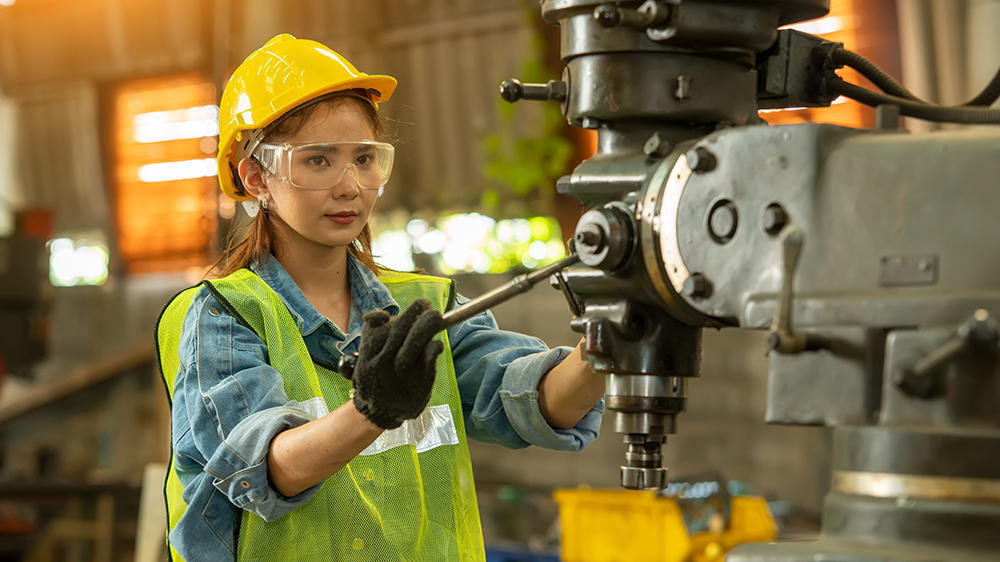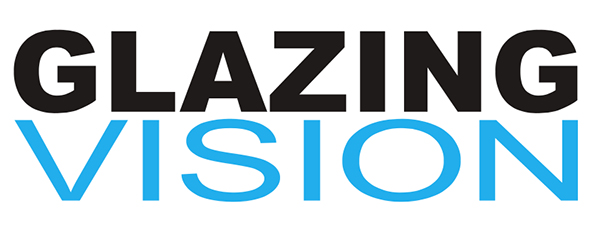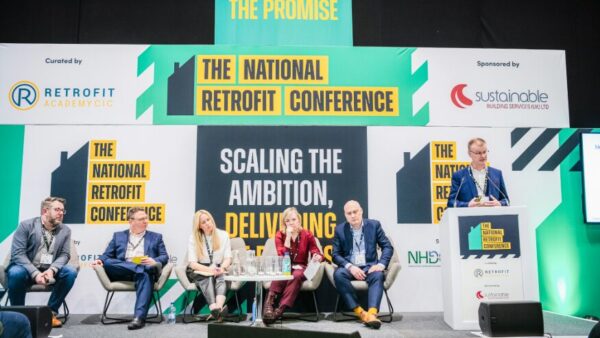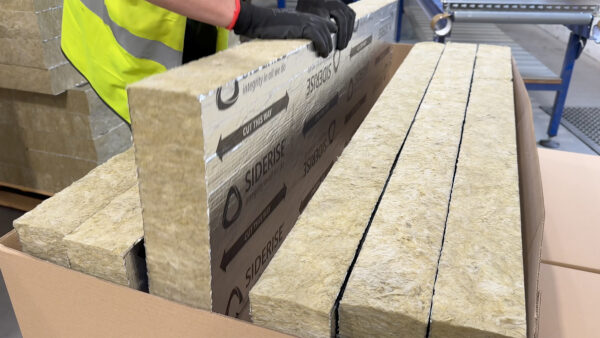
Today (8 March) marks the beginning of Women in Construction week in the UK. Glazing Vision’s managing director, Jon Shooter, discusses his efforts to create an equal workplace and encourage more women of all ages into the industry.
As we celebrate women in construction and look ahead to encourage more women into the industry, we should consider how the workforce breakdown reflects the 50/50 gender balance in the UK.

According to the Chartered Institute of Buildings (CIOB), overall, around 14% of the UK construction workforce are women, but just 2% of these are working as site operatives. If we look at engineering, the figures reported by Engineering UK in 2021 show that only 11% of the workforce is female. The UK has the lowest percentage of female engineering professionals in Europe.
Why does gender equality in the construction industry matter?
Gender equality isn’t just a moral and social issue, the impact in design and construction is much wider. Jen Langfield, architect, and the winner of the RIBA Yorkshire Project Architect Award 2019 for the Hollis Building project, offers her thoughts: “Because women typically represent half of a project’s end users, yet (respectfully), this remains a question that always must be asked! Fundamentally, because procurement and delivery of buildings works better when a greater range of people get involved.”
The benefits of diversity go beyond improved design through inclusivity. They also make business sense. According to the 2019 analysis by McKinsey & Company, companies in the top quartile of gender diversity outperform those at the bottom quarter by 25%.
“People need to have a positive image of women in a hard hat. It is a good thing to see.”
Hazel Beecroft, senior quantity surveyor, adds: “Diversity gives you a wider variety of skills, and each person can solve problems differently. Women typically use softer skills like empathy and compassion, which clients increasingly value in a much more diversified modern supply chain.”
Yet UK Research and Innovation estimates that gender equality in the construction industry will take 200 years to achieve at its current rate. The society around us is changing rapidly with a higher proportion of women in workplaces, including many leading roles across sectors. The question then remains: why do the numbers of females applying for roles in construction remain relatively small?
What are the challenges for women in construction?
The historically male industry is changing. Hazel Beecroft, senior quantity surveyor, says: “In the last 15 years a lot has changed, we have female toilets on site and wolf whistling is a thing of the past. I am no longer the only woman on site. There are definitely more women around me, including in trade roles.”
But Michelle Rolph, QSHE manager at Glazing Vision, said one thing that needs to change is the perception of women in these jobs: “People need to have a positive image of women in a hard hat. It is a good thing to see.” Hayley Liddell, mechanical designer, adds: “What doesn’t help here is the media. It is never just a woman in a hard hat. It is a woman in a pink hard hat and a pink high vis vest, with long nails. And that is not the reality.” But what is the day-to-day reality for women in construction?
Glass ceiling
The glass ceiling still exists. Rick Willmott, CEO of construction and property services firm Willmott Dixon, the official partner of the Inspire Me campaign, said: “We need to get serious about tackling a situation where there are fractionally more than 10% of women working in construction. Higher up the senior ladder, the figures are even worse, with women making up only 5% of executive board members across the leading 30 contractors nationwide.”
“Whilst there are certainly more women in construction now than when I started my career, rarely do I encounter women leading a business or on site.”
Jen Langfield shares an experience that confirms the lack of women in leadership roles: “Whilst there are certainly more women in construction now than when I started my career, rarely do I encounter women leading a business or on site. I appreciate the numerous and complex reasons for this, but it’s vital that career opportunities aren’t gendered at school/college age. In my experience, the administration jobs in construction are almost always done by women – we need to ask why this is.”
Hazel Beecroft adds: “The more females we get higher up and over the glass ceiling that still exists, the more females will be in a position where they can influence business decisions and policy to improve the industry, and also encourage women to join (and stay within) the industry.”
There is, of course, the matter of role models. Hayley Liddell says: “It is difficult because female role models are just hard to find. Who do young children look up to? Or even me? Sometimes you just want to see another woman in a technical role. See how they juggle their family and career.”
Pay Gap
Data published by The Financial Teams in September 2020 shows the worst gender pay gap of the sectors in the UK economy are construction, financial and insurance services, and education. Construction employers with more than 25 staff pay their male staff 23% more than females.
The 2020-21 Rewards and Attitudes survey by The Macdonald & Company reveals similar figures, with construction being one of the worst sectors with a gender pay gap at 20%. This is sadly above the already stark overall UK gender pay gap average of 18%.
Subconscious bias
Research by the University of Illinois, published in 2014, reveals that people subconsciously assume that hurricanes with female names are less powerful and dangerous. Unconscious bias is seen as one of the most challenging obstacles to overcome as it is hardwired in each of us. The women we spoke with found ways to overcome this.
Kelly Wright, technical specification manager at Glazing Vision, says: “I have learned not to take sexist comments personally. I believe these cannot be easily eradicated from the male dominated working environment. I interpreted them as a challenge. I have had to work hard to gain the respect from my male counterparts, contractors, and architects.”
“I have learned not to take sexist comments personally. I believe these cannot be easily eradicated from the male dominated working environment.”
Michelle Rolph adds: “There can be challenges in the perception of roles, but they are often relatively easily overcome. But you do need to stand up for yourself and remember that you are a professional with a wealth of knowledge and experience.”
Jen Langfield explains: “For a long time, the face of construction in the UK was invariably white and male. On top of the barriers to entry, under-represented groups who do not fit this profile share an additional challenge; that your difference often becomes what is used by others to define you. I’m frequently referred to as a ‘female architect’ – I would never choose to describe myself this way.
“However well-meaning this may be – and I do believe it often is – it never fails to feel loaded. My colleagues aren’t regularly described as ‘male architects’, so why discriminate? Fundamentally we do the same job, so I want to be judged equally on my strengths and weaknesses.”
Most women I have spoken with have experienced subconscious bias in their construction careers, and some still share it today. Many feel that it is almost a generational change, but I wonder if anything can be done to remove it sooner.
How do we break down the barriers in the workplace?
Hayley Liddell believes this will take time: “It is a generational change. You can go out and introduce equality and make things look as cool as you like, but we need more acceptance. This will take time.”
I can’t help but think that the energy spent on overcoming adversity could surely be better spent improving the processes, and industry. I asked Jen Langfield what she thinks can we do today to impact a change: “For me, it’s about making the industry safer and more welcoming for all by embracing diversity. The advice of my former teaching colleague, who as a transgender woman had endured personal and institutional discrimination for many years, was always to turn up, be present and do your job as well as you can, with the hope that over time you are judged on your work, rather than you as a person.”
And she explains the rewards: “Be prepared to reflect on how you fit in or stand out from the old-fashioned face of construction – it can be exhausting, but you also get to help define the future of our industry.”
“Girls just weren’t, and perhaps aren’t, encouraged to do STEM from an early age. Therefore, they don’t pursue it.”
Charlotte Marcuzzo, university technical college student and British superbikes racer for FHO racing, says that she has experienced great support in her racing career. She feels her college offers the right encouragement for her studies of engineering, maths, and physics as she works to fulfil her dream of joining one of the professional racing teams as a mechanical engineer. She adds: “There are quite a few girls at my college, and there are nine girls in the Junior Super Sport class I race in, which is the most of any racing classes.” So, perhaps the change is happening already but not at workplaces; maybe it starts sooner.
Starting with learning through play
A glance at the Engineering UK 2018 report shows us that early engagement pays dividends:
- 46.4% of girls 11-14 would consider a career in engineering, compared with 70.3% of boys
- 42.0% of girls 14-16 would consider a career in engineering compared with 66.0% of boys
- 25.4% of girls 16-18 would consider a career in engineering compared with 51.9% of boys
I asked Hazel Beecroft what she thought: “It should all start with learning through play. I have been working in the industry for 15 years during which I completed my degree. There was no bias from the lecturers. It was more the choices students took that were showing the bias. If we create the interest in sciences at a very early age through play with parents, then continue with social media engagement and involve friends within the child age group, I believe we will soon have groups of girls asking for STEM subjects.”
But the educational journeys of each of the women were very different. I soon find out what happens without the support and the positive peer pressure. Kelly Wright says: “I was good at design technology but wasn’t encouraged to do this as a GCSE, and instead I followed my friends and did Childcare.”
Hayley Liddell says about her journey through education: “Girls just weren’t, and perhaps aren’t, encouraged to do STEM from an early age. Therefore, they don’t pursue it. I always enjoyed taking stuff apart. Mechanical Engineering has been in my blood for generations. It still wasn’t easy. From my A levels to Uni, (I studied product design at Brunel University London), there were only a handful of females on my courses, which made it hard to fit in at times.”
“My dad gave me the love for technology. He didn’t fix my bike, instead showing me how to fix it myself. Maybe that is why I always liked to take stuff apart.”
The same Engineering UK 2018 report shows that once girls decide to do STEM, they outperform boys in A Levels. Except for chemistry, more girls get A*-C grades than boys in Maths, Further Maths, ICT and Design and Technology. Looking further, 79.8% of female engineering students get a First or Upper Second. Only 74.6% of male students achieve the same result.
The youngest of our interviewees, Charlotte Marcuzzo, says starting early and support from home is key: “My dad gave me the love for technology. He didn’t fix my bike, instead showing me how to fix it myself. Maybe that is why I always liked to take stuff apart. I haven’t always been the best at putting things back together, but it gave me the confidence to try. What I have learnt is that girls can and do things just as well as boys.”
Glazing Vision – creating a level playing field
As we conclude our interviews, or rather friendly chats, that include stories of achievements and mishaps at work, motorcycle races, sporting achievement after reaching fifty, football managers and one interruption by a crying and hungry baby, I ask what support Glazing Vision has given to women in the industry.
Charlotte Marcuzzo says: “Glazing Vision has been amazing inside my college and outside. They have provided a unique opportunity by providing my college with a project that got all students engaged and learning.” She is also incredibly excited about what the future holds: “Outside of college, they have helped out massively financially with my racing, and I look forward to working with them and introducing them to the racing paddock.”
Kelly Wright says: “My family are farmers. I am super competitive, and I have never felt like I couldn’t achieve or perform the same as my male colleagues. But Glazing Vision has always encouraged me to reach my goals. They supported me with years of professional development. I have tried different roles, and now I’m in a position that suits me and which I’m passionate about.”
Michelle Rolph points out how much confidence in her technical capabilities she gained through her role at Glazing Vision: “I learn by working with the people here. And through that, I can find out if I am the right person, with the right skills and in the right role. And have the conviction that I can make improvements.”
She adds that this has quickly spilt into her personal life: “I had to learn many technical things at work. So, when my husband and I bought a small chalet, we turned it off the grid and installed solar panels and inverters. We got a wind turbine up. I am doing all the things I didn’t have the opportunity to do.”
Kim Daley concurs: “During my time, well when I started, there were six girls in the office and now it is half and half. So that is amazing in 4 years. And it is great. We created an empowering and enriching environment rather than one that is a constant challenge.”
And Jen Langfield agrees on support delivery for a positive impact: “I believe those of us who share greater representation and privilege have a duty to advocate for those who face greater challenges in the industry. A large part of this is about stepping back and listening – I think it’s important not to speak on someone else’s behalf when it’s their voice that should be heard.”
Join the debate with us on LinkedIn, #womeninconstruction or contact us to find out more about careers within Glazing Vision and to see what support we can offer to get you started in the construction industry.
This article has been produced by Construction Management in association with Glazing Vision










